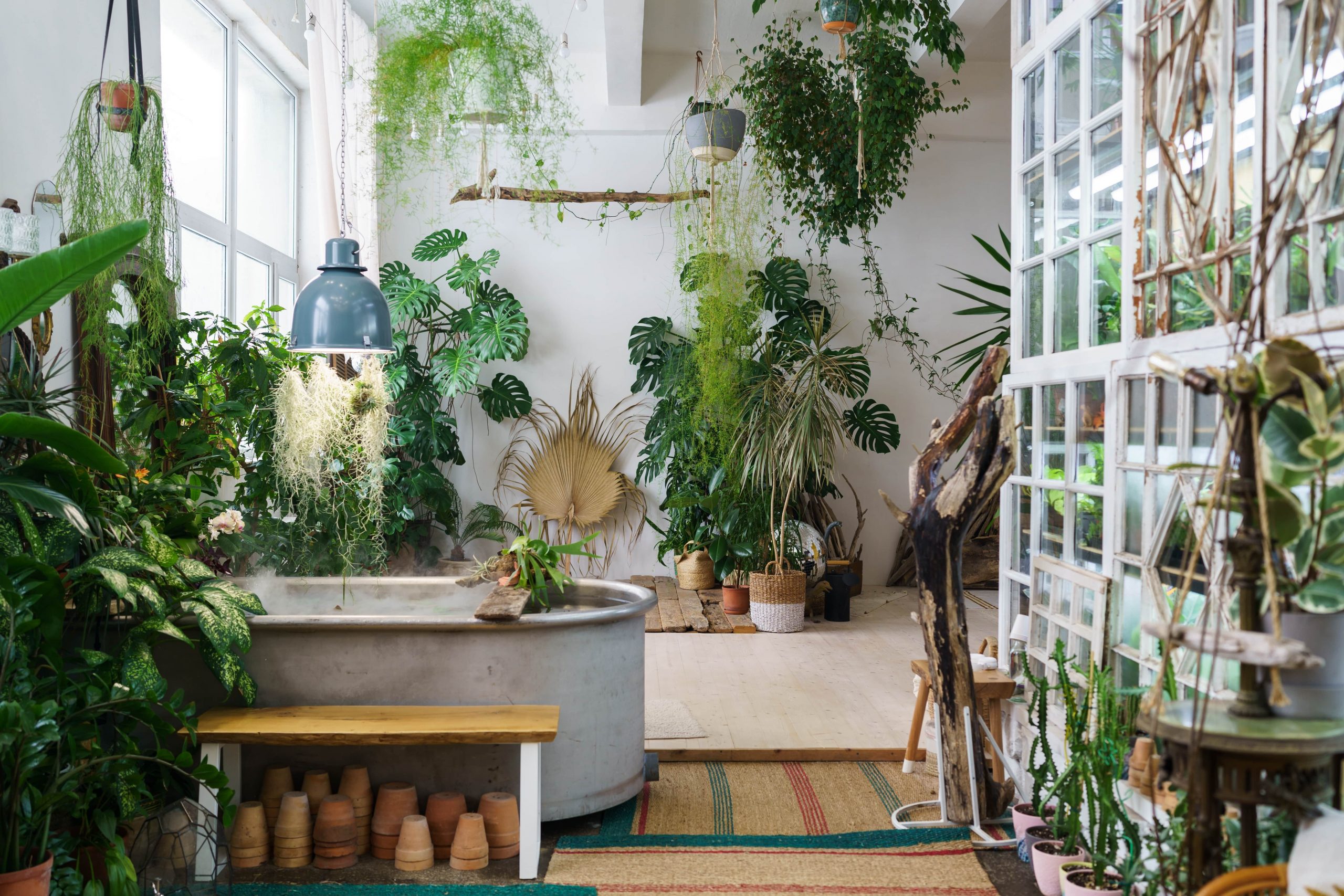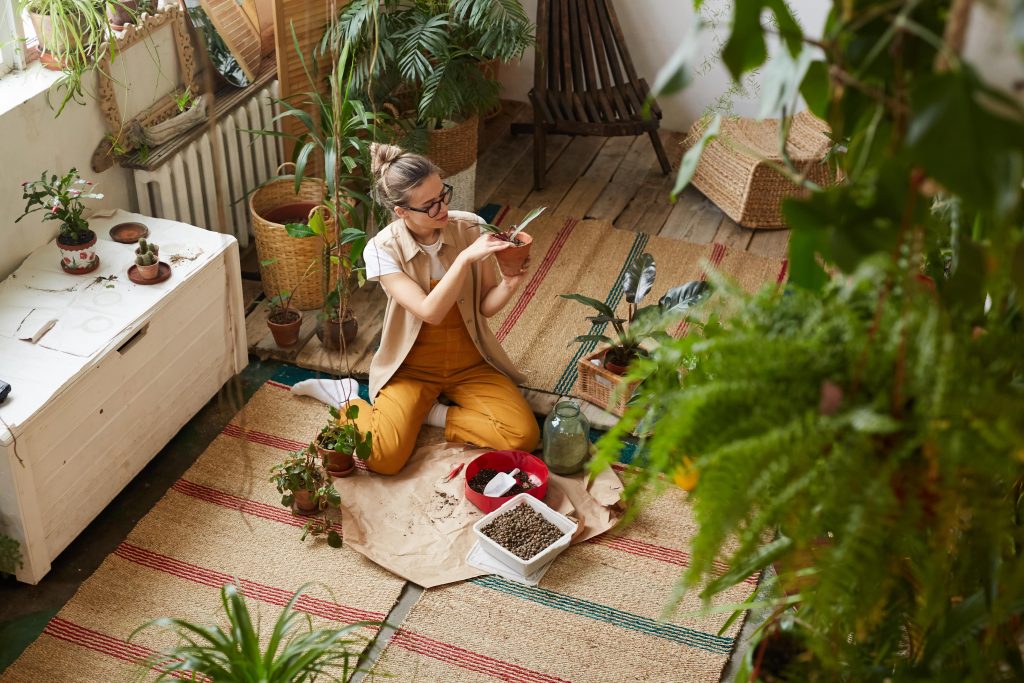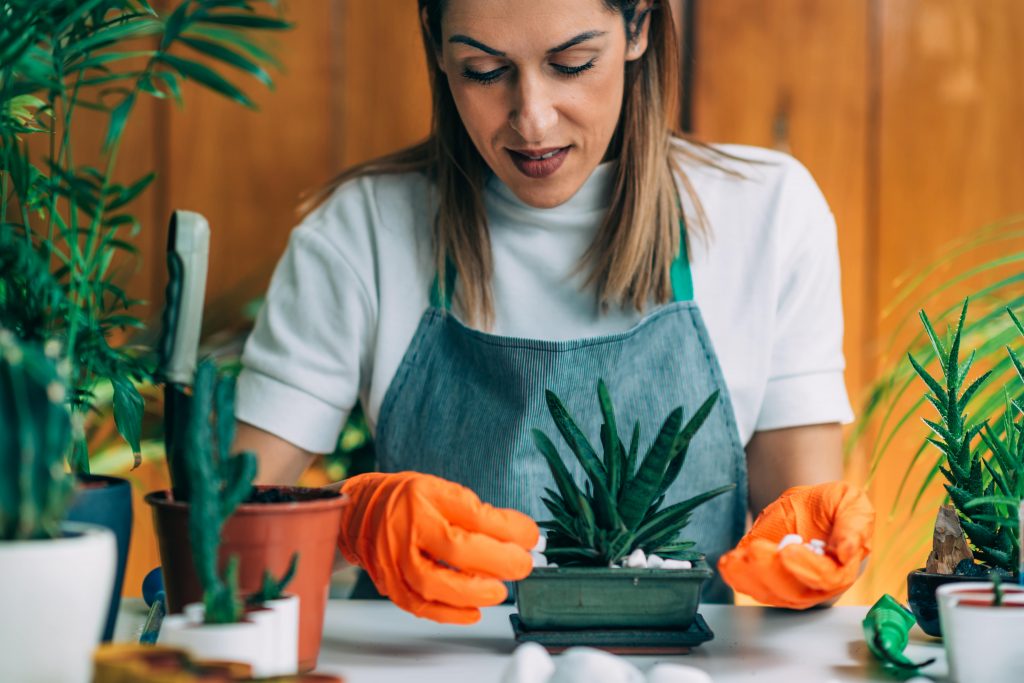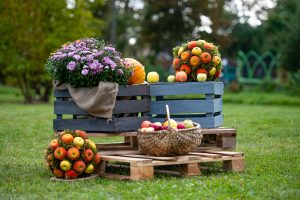
The Best Plants For Indoor Gardening In Small Spaces
City people find it difficult to have a garden. Still, an interior garden might help your house to include nature. Selecting the correct plants, containers, and lighting and providing regular maintenance can help one create a little garden that thrives. Garding inside can help you to add some beauty to your house and let you appreciate the silence of plants.
Whether you have a corner, table area, or vertical space, there are many choices for gorgeous flowers to accentuate your house. The ideal plants for tiny indoor gardens will be discussed in this book along with tips on how to maintain them and where to place them such that your urban retreat thrives. Now let’s explore the amazing realm of indoor gardening and discover how to transform a modest space into a verdant, green refuge.
Types of Plants for Indoor Gardening in Small Spaces
Lack of space shouldn’t allow you miss the advantages of home gardening. With the correct plants, even the tiniest space may become a lovely green refuge. Even if it’s only a little room or workplace, several types of plants may thrive inside and liven any space.

Air Plants
Small homes might benefit much from the Tillandsia plant, often known as an air plant. People who don’t have a lot of floor or table space would find these unusual plants a fantastic fit because they may flourish without soil.
Air plants stand apart in one respect—they absorb nutrients and water from the air. They do not need soil to flourish as they have unique structures called trichomes that enable water and nutrient absorption. This makes air plants very adaptable and able to live in a broad spectrum of environments.
Maintenance of air plants is not too difficult. They do best with indirect light, so put them near windows or under thin curtains for the best results. Air plants also need to be misted or soaked every once in a while to make sure they get enough water. Putting them in water for 20 minutes once or twice a week is usually enough to keep them healthy.
Air plants can be put on shelves or in glass terrariums, hung from the ceiling with string or wire, or hung from the ceiling with string or wire. This habit of growing vertically helps people make the most of small spaces and grow unique, eye-catching indoor plants.
Snake Plant
Snake plants, which are also called Sansevierias, are great for small home gardens. These plants are easy to take care of and do well in a range of light conditions, so they can be used in any home setting.
Because they grow straight up, they can be put on tables or floors to make the most of limited room. In addition to their aesthetic appeal, snake plants have the added benefit of purifying the air. They release oxygen at night, making them perfect for bedrooms or living areas.
One of the major advantages of snake plants is their low-light tolerance. They can tolerate both bright, indirect light and low-light conditions, making them a popular choice for indoor environments with limited natural light. This makes them particularly suitable for small spaces or rooms without windows.
Furthermore, snake plants are known for their air-purifying qualities. They remove toxins from the air, including formaldehyde and benzene, creating a healthier indoor environment. This makes them a popular choice for anyone seeking to improve air quality in their homes.
With their easy care, vertical growth, low-light tolerance, and air-purifying qualities, snake plants are the perfect addition to any indoor garden in small spaces.
Spider Plant
The Spider Plant is an excellent choice for indoor gardening, especially for those with limited space. Its easy-to-grow nature and ability to tolerate various light conditions make it a perfect addition to any indoor space.
One of the standout features of the Spider Plant is its unique foliage. The leaves are long and skinny, resembling spider legs, giving the plant its name. This distinct characteristic adds an interesting and eye-catching element to any indoor garden.
Another advantage of the Spider Plant is its versatility as a hanging plant. Its cascading foliage makes it an ideal choice for hanging planters or macrame holders, allowing it to be displayed in small spaces without occupying valuable floor or counter space.
One of the reasons why the Spider Plant is so popular is its ability to adapt to different light conditions. It can thrive in both indirect and bright, direct light, making it suitable for rooms with limited natural light or sunny windowsills. Its adaptability to light conditions gives the Spider Plant the advantage of being able to thrive in various locations within a small space.
With its ease of care and ability to thrive in different light conditions, the Spider Plant is the perfect addition to an indoor garden in a small space. Its unique foliage and ability to hang make it a standout choice for anyone looking to add a touch of greenery to their indoor space.
Nerve Plant
The Nerve Plant, also known as Fittonia, is a fantastic option for indoor gardening in small spaces. This plant is loved for its small size and vibrant leaves, which come in various shades of green, white, and pink. Its unique characteristics make it a popular choice for adding a pop of color and texture to any indoor garden.
One of the standout features of the Nerve Plant is its preference for humid environments. This plant thrives in areas with higher humidity, making it an excellent choice for placement in a kitchen or bathroom. The moisture-rich environment of these rooms will provide the perfect conditions for the Nerve Plant to flourish.
Proper care is essential for the Nerve Plant’s success. It requires regular watering to keep the soil consistently moist. However, it’s important to avoid overwatering as it can cause root rot. Be sure to allow the top inch of soil to dry out slightly before watering again.
When it comes to light conditions, the Nerve Plant prefers indirect sunlight. Avoid placing it in direct sunlight as this can scorch the leaves. Instead, opt for a spot with bright, indirect light to ensure the best growth and health of the plant.
Tropical Plants
Tropical plants are an excellent choice for indoor gardening in small spaces, as they bring an exotic and vibrant atmosphere to any room. With their unique characteristics, including exotic flowers, colorful leaves, and trailing vines, these plants are sure to add a pop of color and interest to your indoor space.
While tropical plants may require a little more dedication in terms of water, humidity, and light requirements, the atmosphere they create makes the effort worth it. Some popular tropical plants for indoor gardening include the Orchid, Bird of Paradise, Bromeliads, and Anthuriums. These plants not only add beauty to your space but also help purify the air.
When caring for tropical plants, it’s important to provide them with the right conditions. They typically thrive in a humid environment, so misting their leaves or placing them on a tray with water can help increase humidity levels. Additionally, providing them with indirect, bright light is essential, as direct sunlight can scorch their leaves.
With their exotic beauty and striking features, tropical plants are a perfect choice for bringing a touch of the tropics into small indoor spaces. Take the time to properly care for these plants, and you’ll be rewarded with a lush and vibrant indoor garden.
Hardy Plants
Hardy plants are the perfect solution for indoor gardening in small spaces, as they can easily withstand indoor conditions and require minimal care. These plants are ideal for those who have limited time or lack a green thumb but still want to enjoy the beauty of indoor plants.
One popular hardy plant is the Snake Plant (Sansevieria), which can thrive in a variety of light conditions, including low light. It has long, upright leaves that come in various shades of green, adding a touch of natural beauty to any space. Another great option is the Spider Plant (Chlorophytum comosum), known for its ability to purify the air. This plant features arching leaves with white stripes, creating a pop of color and interest.
For those with limited floor space, the Pothos Plant (Epipremnum aureum) is an excellent choice. This vine-like plant can be grown in hanging baskets, allowing it to cascade down and fill vertical space. It can tolerate low light and sporadic watering, making it perfect for busy individuals.
If you’re looking for a statement plant, the Peace Lily (Spathiphyllum) is a great option. With its glossy, dark green leaves and elegant white flowers, it adds a touch of sophistication to any indoor space. It thrives in low light conditions and requires minimal care.

Conclusion
In conclusion, creating a thriving indoor garden in small spaces is completely possible with the right plant choices and proper care. By choosing plants that can thrive in limited space and various light conditions, such as Snake Plants, Spider Plants, Pothos Plants, and Peace Lilies, you can add a touch of natural beauty and greenery to any indoor space. Additionally, it is important to consider the size and growth habit of plants when working with limited floor or counter space. Utilizing vertical space with hanging baskets or window boxes can help maximize the available area. It is also crucial to provide the right amount of light, water, and proper care to ensure the plants’ health and growth. Remember to research the specific needs of each plant and adjust accordingly. With these tips, you can create a stunning indoor garden that brings joy and serenity to even the smallest of spaces.


